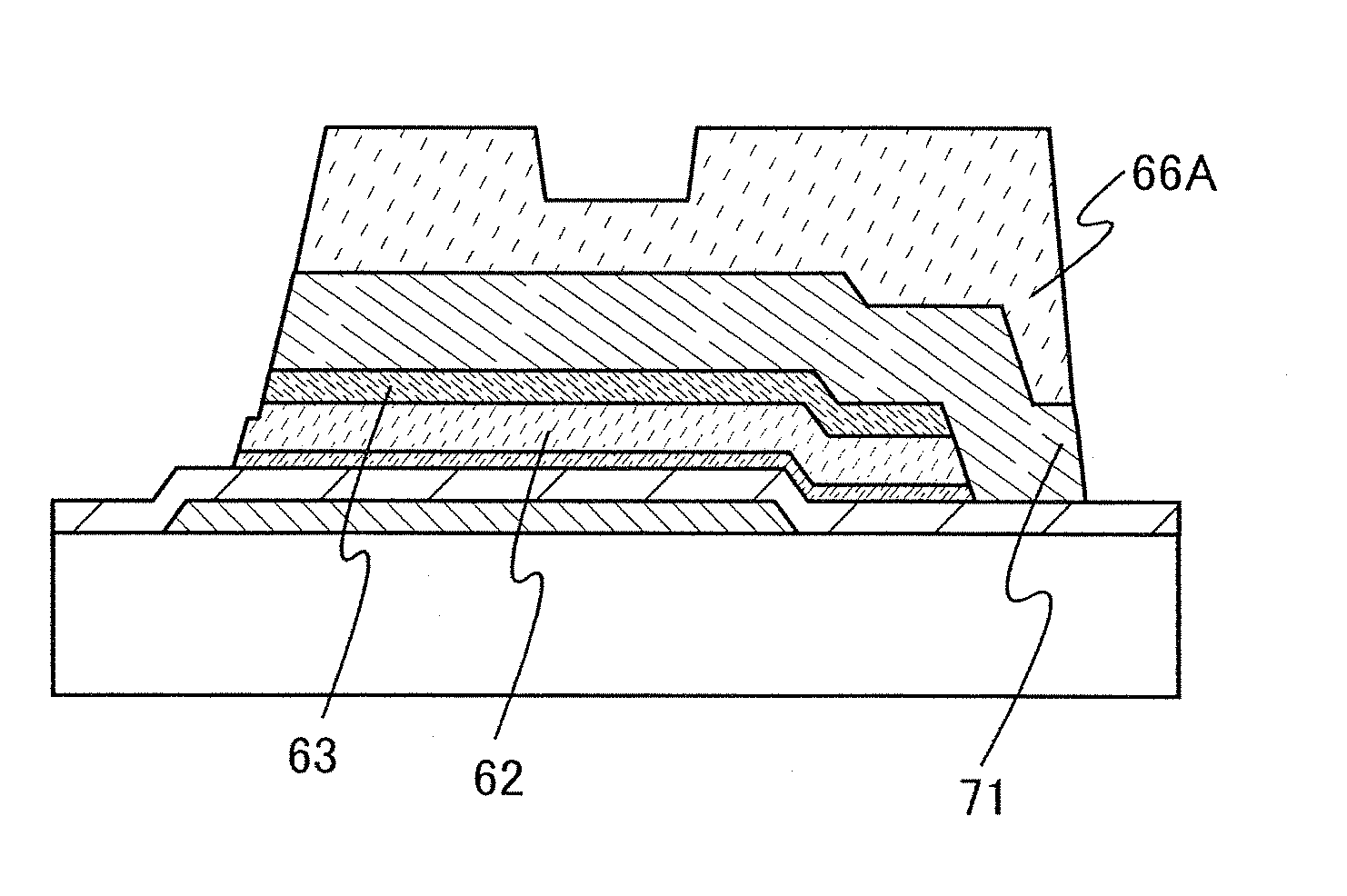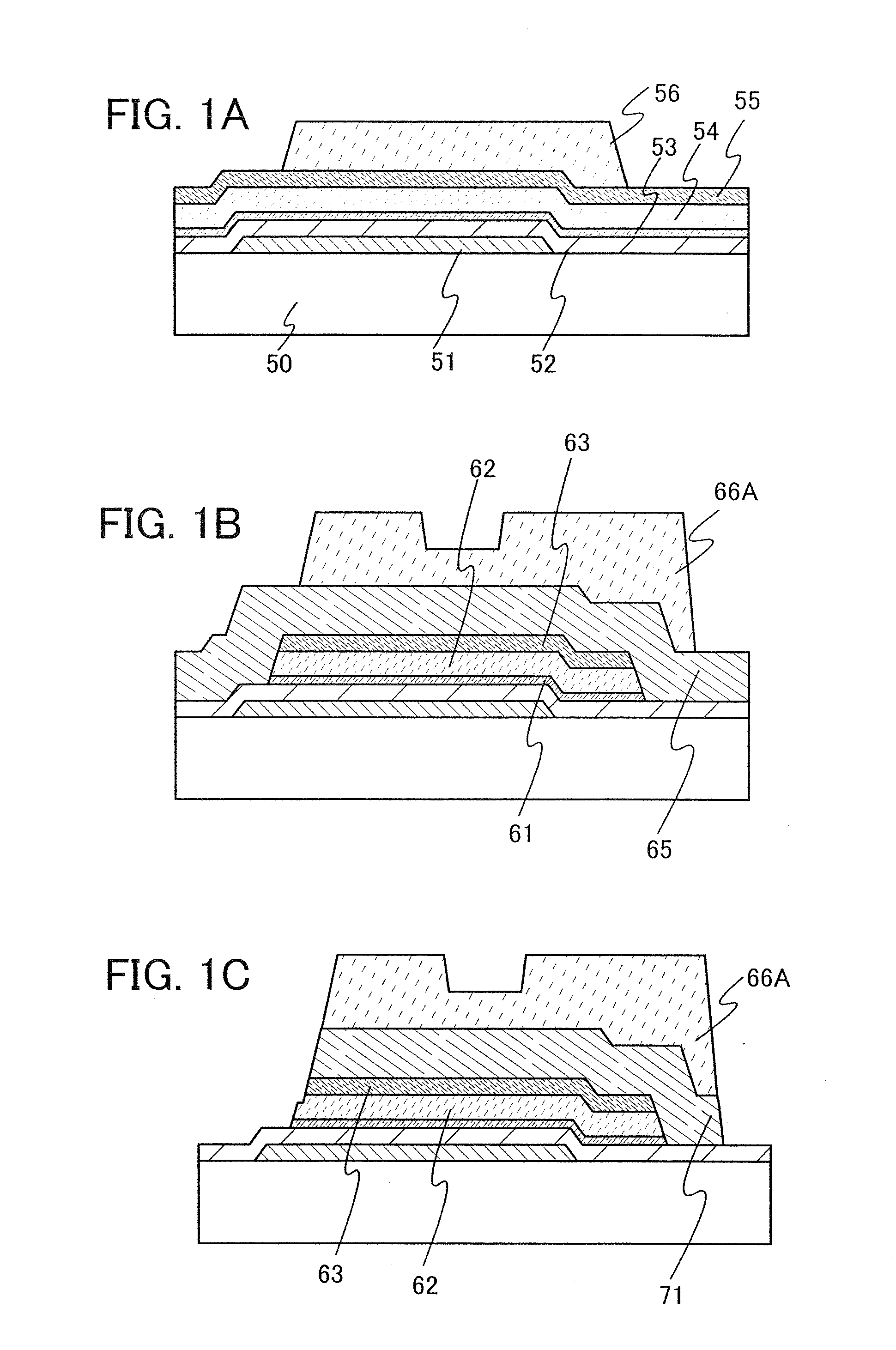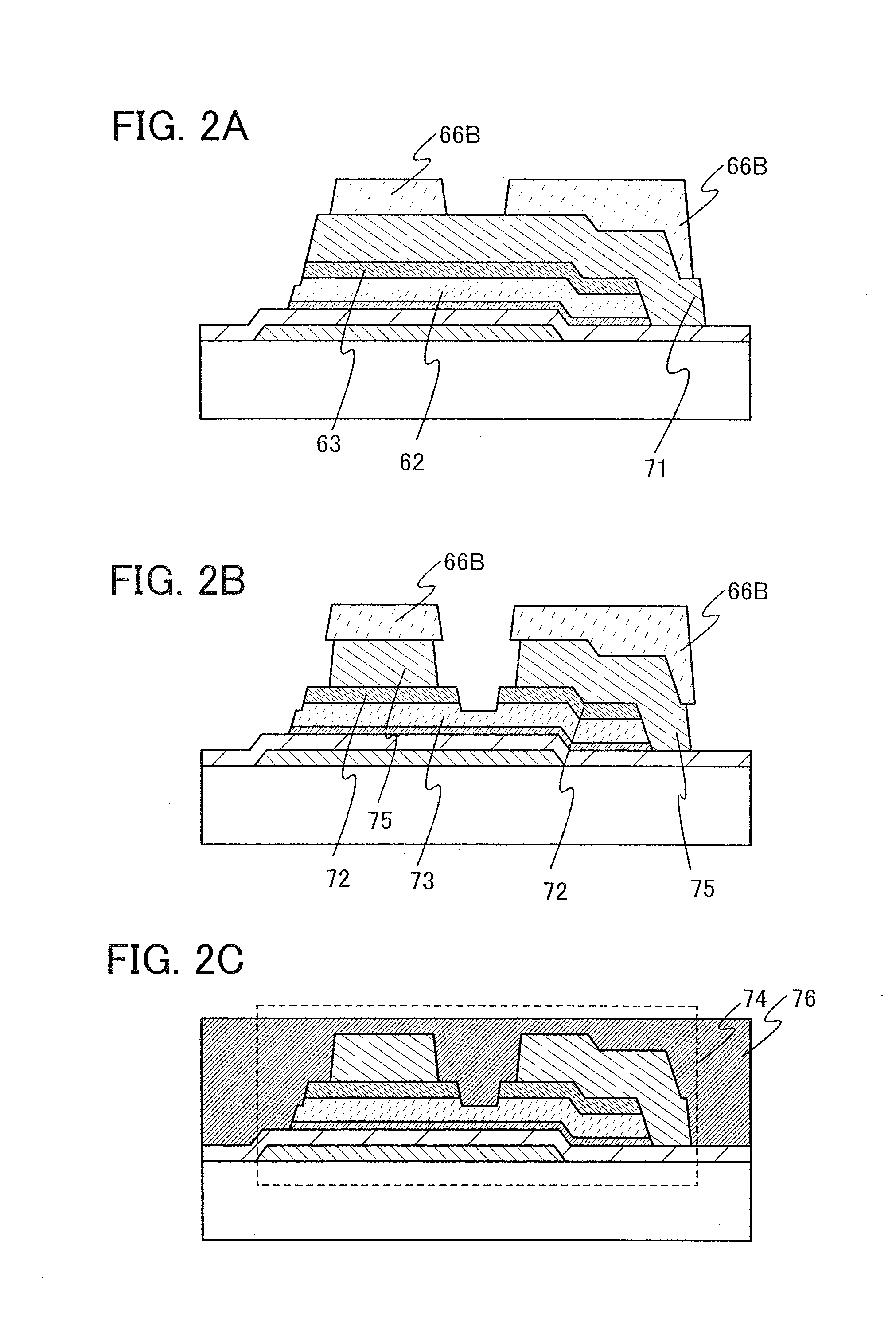Electrophoretic display device and method for manufacturing thereof
a display device and electrophoretic technology, applied in the field of electrophoretic display devices and methods for manufacturing thereof, can solve the problems of increased cost, reduced yield, and complicated process of transistors using polycrystalline semiconductor films, and achieve high reliability and electric characteristics
- Summary
- Abstract
- Description
- Claims
- Application Information
AI Technical Summary
Benefits of technology
Problems solved by technology
Method used
Image
Examples
embodiment mode 1
[0032]In this embodiment mode, a manufacturing process of an electrophoretic display device, in particular, a manufacturing process of a pixel having a thin film transistor are described with reference to FIGS. 1A to 1C, FIGS. 2A to 2C, FIGS. 3A and 3B, FIG. 4, FIGS. 5A and 5B, and FIGS. 6A to 6C. FIGS. 1A to 1C, FIGS. 2A to 2C, and FIGS. 3A and 3B are cross-sectional views illustrating a manufacturing process of a thin film transistor, FIG. 4 is a view for illustrating an electrophoretic display device, and FIGS. 5A and 5B are respectively a top view and a longitudinal sectional view of a connection region of a thin film transistor and a pixel electrode in a pixel. Further, FIGS. 6A to 6C illustrate appearances of an electrophoretic display device.
[0033]An n-channel thin film transistor having a microcrystalline semiconductor film is more suitable for use in a driver circuit than a p-channel thin film transistor having a microcrystalline semiconductor film because it has a higher m...
embodiment mode 2
[0092]In this embodiment mode, a manufacturing process, which is a different process of the electrophoretic display device shown in Embodiment Mode 1, is described with reference to FIGS. 7A to 7B and FIGS. 8A and 8B.
[0093]First, a molybdenum film 702 is formed over a supporting substrate 701. As the supporting substrate 701, a glass substrate, a ceramics substrate, or a quartz substrate can be used. In this embodiment mode, a glass substrate is used. The molybdenum film 702 is a molybdenum film formed by a sputtering method with a thickness of 30 to 200 nm. Since the substrate may be fixed in the sputtering method, the thickness of the molybdenum film in the vicinity of the edge portion of the substrate tends to be nonuniform. Therefore, the molybdenum film on the edge portion is preferably removed by dry etching.
[0094]Next, a molybdenum oxide film 703 is formed by oxidation of a surface of the molybdenum film 702. The molybdenum oxide film 703 may be formed by oxidation of the sur...
embodiment mode 3
[0108]In this embodiment, the appearance and the cross section of an electrophoretic display device of the present invention is described with reference to FIGS. 9A and 9B. FIGS. 9A and 9B are views of an electrophoretic display device in which a thin film transistor 4010 including a microcrystalline semiconductor film and an electrophoretic display element 4008 which are formed over a first flexible substrate 4001 are sealed with a sealant 4005 between the first substrate 4001 and a second flexible substrate 4006. FIG. 9B is a cross-sectional view taken along line A-A′ of FIG. 9A.
[0109]A sealant 4005 is provided so as to surround a pixel portion 4002 and a scan line driver circuit 4004 which are provided over the first flexible substrate 4001. Further, the second flexible substrate 4006 is provided over the pixel portion 4002 and the scan line driver circuit 4004. Therefore, the pixel portion 4002 and the scan line driver circuit 4004 as well as the electrophoretic display element ...
PUM
 Login to View More
Login to View More Abstract
Description
Claims
Application Information
 Login to View More
Login to View More - R&D
- Intellectual Property
- Life Sciences
- Materials
- Tech Scout
- Unparalleled Data Quality
- Higher Quality Content
- 60% Fewer Hallucinations
Browse by: Latest US Patents, China's latest patents, Technical Efficacy Thesaurus, Application Domain, Technology Topic, Popular Technical Reports.
© 2025 PatSnap. All rights reserved.Legal|Privacy policy|Modern Slavery Act Transparency Statement|Sitemap|About US| Contact US: help@patsnap.com



